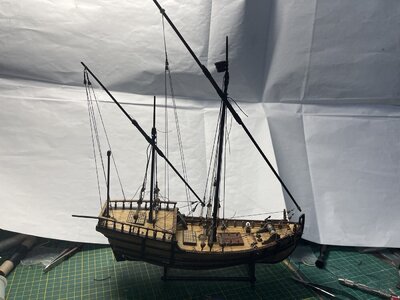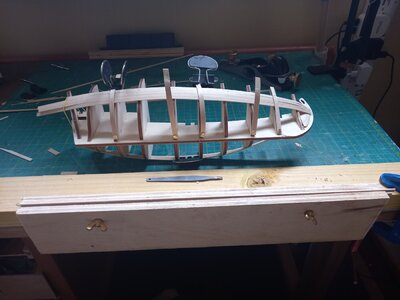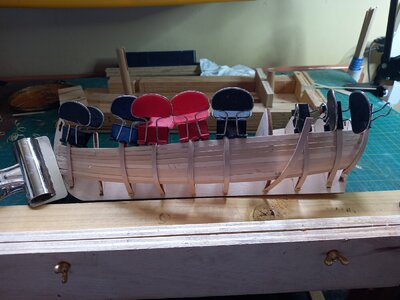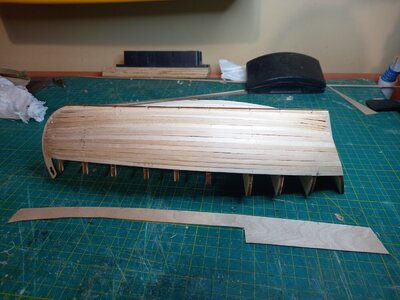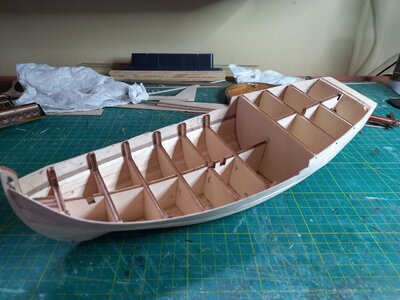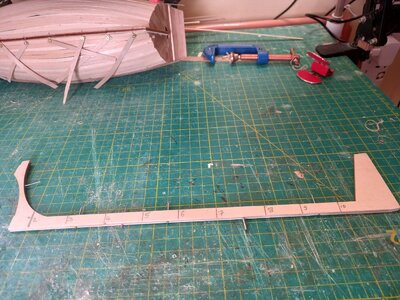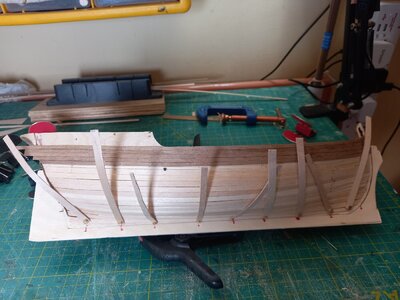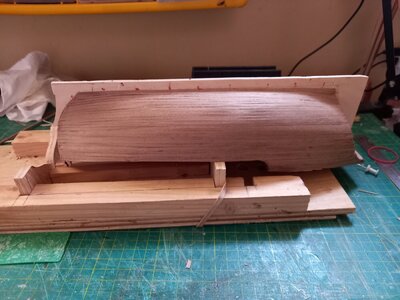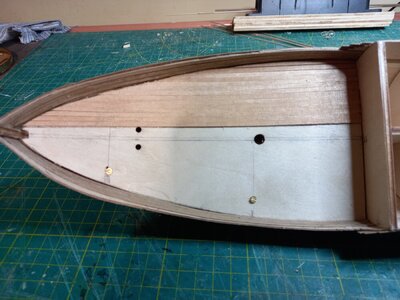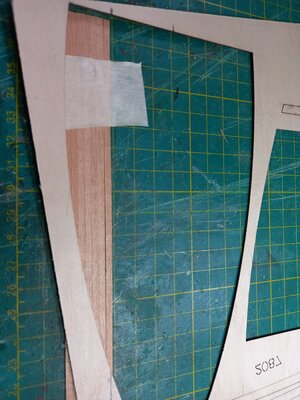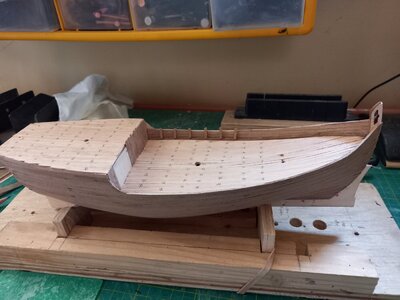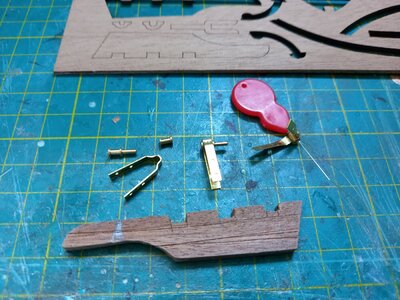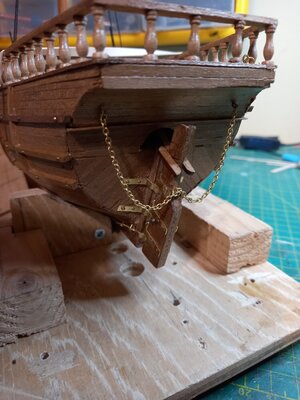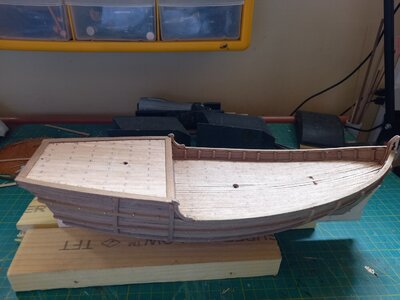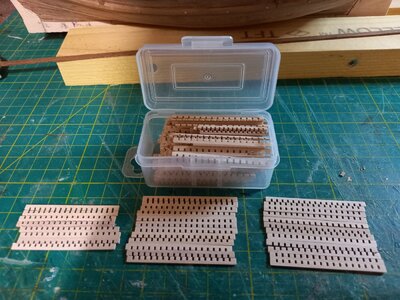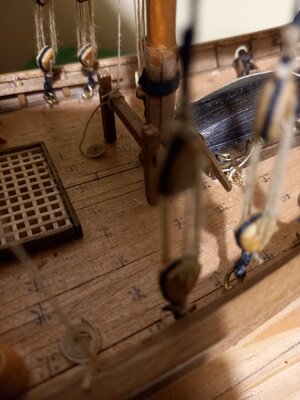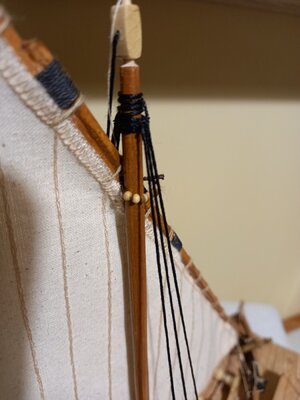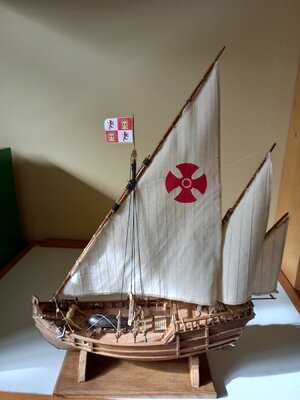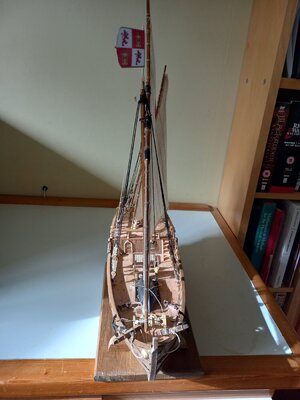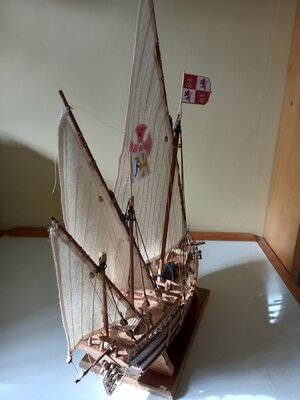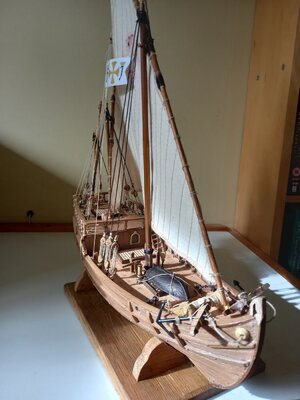Why?
I am fast running out of shelf space! Large, square-rigged models (e.g. Vasa) have such long main yards that they require a shelf so deep that they could share it with a 1950s television set. My first thought was to go for a fore-and-aft rig ship but could not find one that took my fancy. When I looked at the dimensions of the trio Nina, Pinta and Santa maria they seemed to make modest demands on shelf space - especially Nina in her original lateen rig. I have a tall bookcase that stops 550mm short of the ceiling so that could accommodate all or some of these models - thank you Columbus for not adding topgallants.
Several manufacturers offer kits for these models including Artesina Latina, Dusek, Amati and Mantua. I have opted for Amati on the basis of scale, price and appearance. I have not built one of their models before.
Unpacking.
No great surprises in the box: strips, cut plywood, dowels and fittings.
I like the way the strips are labelled for deck, first layer and second layer. Not really necessary for this kit but I remember being confused by the plethora of unlabelled planks of various woods in the Corel Vasa kit. There is a compact, colourful instruction booklet and some 1:1 scale plans that will be useful for taking measurements from. The supply of rigging thread looks rather frugal: a short coil of anchor rope. a coil of black rope for the stays and a bobbin of fine rope for everything else. I hope there is enough. At least there are no ratlines!
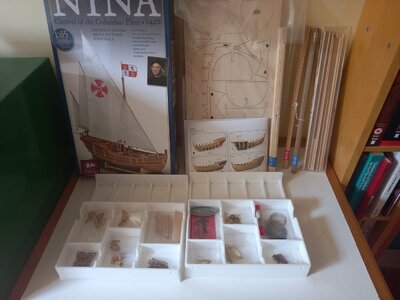
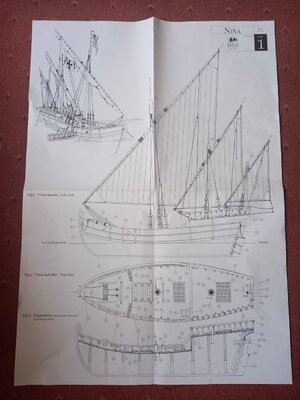
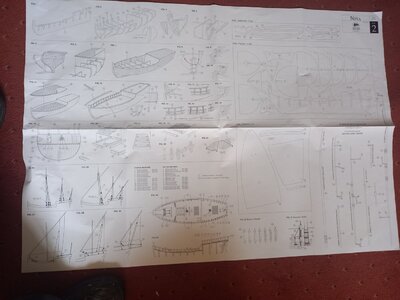
I am fast running out of shelf space! Large, square-rigged models (e.g. Vasa) have such long main yards that they require a shelf so deep that they could share it with a 1950s television set. My first thought was to go for a fore-and-aft rig ship but could not find one that took my fancy. When I looked at the dimensions of the trio Nina, Pinta and Santa maria they seemed to make modest demands on shelf space - especially Nina in her original lateen rig. I have a tall bookcase that stops 550mm short of the ceiling so that could accommodate all or some of these models - thank you Columbus for not adding topgallants.
Several manufacturers offer kits for these models including Artesina Latina, Dusek, Amati and Mantua. I have opted for Amati on the basis of scale, price and appearance. I have not built one of their models before.
Unpacking.
No great surprises in the box: strips, cut plywood, dowels and fittings.
I like the way the strips are labelled for deck, first layer and second layer. Not really necessary for this kit but I remember being confused by the plethora of unlabelled planks of various woods in the Corel Vasa kit. There is a compact, colourful instruction booklet and some 1:1 scale plans that will be useful for taking measurements from. The supply of rigging thread looks rather frugal: a short coil of anchor rope. a coil of black rope for the stays and a bobbin of fine rope for everything else. I hope there is enough. At least there are no ratlines!






